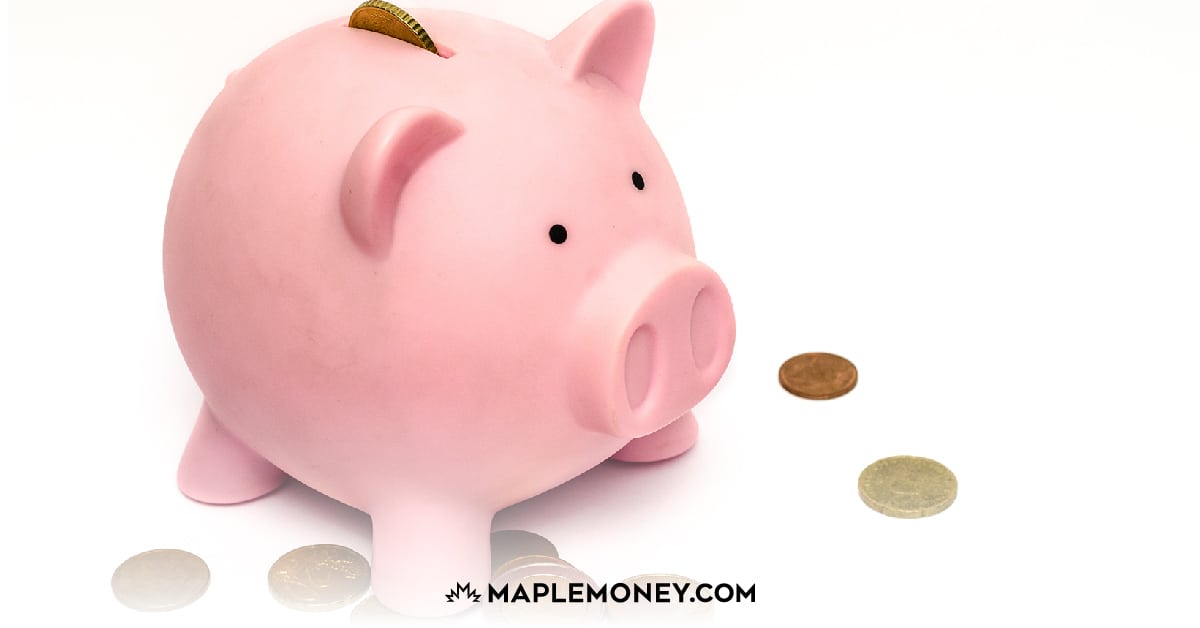What Should You Do With Your Tax Free Savings Account?

One of the good things about our government is the fact that it is interested in encouraging the population to save… at least to some degree. To this end, Canada’s government offers special savings accounts that come with tax benefits. One of these savings accounts is the Tax Free Savings Account (TFSA).
What is the TFSA?
The Tax Free Savings Account is a government program that allows your investments to grow tax free. You make your contributions with after-tax dollars, and you aren’t taxed on the earnings you receive from the investments held in your account. So, if you invest $1,000 now, and over time that $1,000 sees a return that grows to $3,000, you are never taxed on the $2,000 that your money has earned. You’ve pretty much received some of the most efficient earnings you can. And, the fact that you can contribute up to $5,500 a year means that there is pretty good room to build your wealth over time.
It’s also worth noting that there is also no tax owed when you withdraw money from your TFSA. This is one of the items that makes the TFSA so attractive. If you expect to be in a higher tax bracket later on, it makes sense to pay taxes on your contributions now, while you are in a lower tax bracket, and then later, you don’t have to worry about paying taxes on your earnings.
The earlier you start investing in a TFSA, the better off you’ll be, since you will have more years for your money to grow. That means that you end up with more money that might never be taxed (assuming the TFSA rules don’t change).
Every year, it makes sense to evaluate your investing strategy, including what you put into registered accounts like the TFSA. Since you get another $5,500 in contribution room each year, it makes sense to look at some options.
Use Your Tax Free Savings Account as an Emergency Fund
If you don’t already have an emergency fund, you should consider starting one right away. A TFSA can be a great way to accomplish this since the money is normally easy to get when needed and your savings will grow tax free.
You can re-use your contribution room as well. So, if you put in $5,500 this year, but then you have an emergency later, and you withdraw $2,000 of it, you can put that $2,000 back in next year. You can even roll over your contribution room over year to year. So, next year, you can contribute $7,500 if you want to make up for the previous year’s contribution room, plus use this year’s.
The TFSA is a great place to keep money that you want to be reasonably liquid, since it allows you to take advantage of investment returns with a tax advantage, and you don’t have to worry about penalties for early withdrawal.
Save Up For Annual Expenses With Your TFSA
Maybe you have large annual expenses like property tax or insurance? Maybe you just want to start saving towards next Christmas? Contribute to your Tax Free Savings Account each month so that you’re prepared for when these bills are due. Just like the TFSA is a great place for an emergency fund, it’s also a great place to increase the tax efficiency of your planned annual expenses. Earn a little bit higher return on the money so that it’s doing something for you until it’s needed.
I set up an Tangerine TFSA to use as both an emergency fund and to save up for our large annual expenses. If you sign up for a new Tangerine TFSA, you can get up to $50 and a 2.4% interest rate for 6 months.
Your Tax Free Savings Account Can Shield Your Investments From Taxes
Another option it to put some of your investments into the TFSA. A Tax Free Savings Account works especially well if you want to withdraw a tax free income from investments like REITs.
REITs can have various types of distributions, some of them not very tax efficient. Additionally, there are other types of investments that aren’t particularly tax-efficient. If you don’t want to wind up worrying about taxes on some of your investment returns, housing your assets in a TFSA can make sense.
I set up my TFSA with Questrade and invest in REITs and a couple other stocks. You can sign up for a Questrade account and get a free $50 in trades with this Questrade promo link.
There are some investments that you shouldn’t put in your TFSA, however. Some investment earnings come with favorable tax treatment already, so it doesn’t make sense to put them in a TFSA. You are just wasting the usefulness and efficiency of the TFSA when you put tax-efficient investments inside this type of account. Make sure you figure out an investment strategy before you start putting assets in a TFSA.
Planning ahead, and figuring out how to best accomplish your financial goals makes sense in any situation. Make sure you consider your RRSP and RESP strategy at the same time you are looking into your TFSA. You want your various accounts, including registered and non-registered investment accounts, to match up. Integrate a TFSA with your overall financial, investing, and tax planning, and you can put together a system that makes the most of your money.
What do you use your TFSA for? Do you have different plans for this year’s contribution room?


Comments
I look at my TFSA as part of a long term savings vehicle for retirement (tax free income at retirement) and have invested in dividend paying stocks and a REIT so far. Not sure what I will purchase this year but I’m think I will top up my position in the REIT and then add another dividend payer.
I also use my TFSA as a complement to my RRSP. Income generated from dividends can have a different tax benefits over RRSP at retirement depending on your tax rate.
Nice post Tom! I use my TFSA to compliment my RRSP. I put all my U.S. dividend payers in my RRSP, I will be putting more Canadian dividend payers in my TFSA.
I opened a brokerage account with my TFSA. I’ve grown it to over 30K. It trades like an RSP – you can’t sell short, and you can buy options, but not write uncovered positions.
I notice that the Banks and other financial institutions don’t mention what it will cost in service charges, fees, commissions, etc. to manage their TFSA account over the life of this financial instrument.
Please advise.
Thanks.
I have only Canadian Reits in my TFSA and have only US equities in my RRSP after mistake of initially mixing the two!
I plan on using my TFSA as a dividend stock portfolio. I love the idea of being able to reinvest dividends and grow my TFSA on top of the $5,500 annual limit addition.
It would be awesome to build the account up to where it could cover my mortgage payments!
I want to sell my cottage..yes I will pay capital gains, but i want to purchase an adult senior condo and rent it out until i need it ..20 years down the road… Can i do this under TFSA?
After finally figuring out how badly my bank was misleading me, aggressively pushing there own products, hidden costs etc, And watching the news story on the TD banks practices.
I am looking to reinvest in a TFSA and get out of my mutual fund, Any direction or ideas for a beginner to start? Would Tangerine be a good place to start ? I also wanted to purchase some individual stocks that I have researched. Or should I see a financial divisor ?
Thanks
Hi Chris,
Did you receive any suggestions? I am on the same boat.